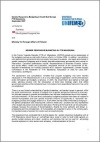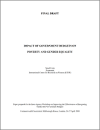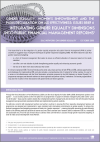FOUND 26
A summary guide for policy makers, gender equality and human rights advocates" is a publication based on a report by Diane Elson "Budgeting for Women's Rights: Monitoring Government Budgets for Compliance with CEDAW" by UNIFEM 2006.
This booklet was commissioned by the Southern African Regional Office (SARO) of the United Nations Development Fund for Women (UNIFEM). UNIFEM has been supporting GRB work in the region for many years. It sees this booklet as yet another way in which it can link the work on GRB and rights.
This book aims to contribute to the evolving understanding of public expenditure management as a political, rather than a purely technical, process. In particular, it explores the ways in which a rights approach can contribute to strengthening pro-poor voice and outcomes in budget processes.
Since the start of the COVID-19 pandemic, almost USD 16 trillion has been pumped into the global economy, and governments are now rolling out second and third ph
The following report, published by The Nordic Council of Ministers, is part of a Nordic cooperation project that strives to contribute to the integration of a gender and equality perspective into Nordic financial policy.
This fact sheet was produced by UNIFEM in 2007 under the UNIFEM sub -regional programme "Gender-Responsive Budgeting in South East Europe: Advancing Gender Equality and Democratic Governance through Increased Transparency and Accountability launched in late 2006.
This paper provides guidance on how to make Public Finance Management (PFM) reforms gender responsive. It presents an overview of PFM reforms and explains how and why they are important to the achievement of gender equality outcomes.
In this paper, Simel Esim (2000) focuses on expenditure and revenue instruments of fiscal policy as strategic entry points for engendering macroeconomics. The paper also includes a discussion of the potential implications of monetary policy and overall fiscal stance on poverty and gender equality.
This paper by Simel Esim (2000) explores the revenue side of gender budgeting. Esim also discusses policies and suggests strategies for gender-sensitive budgeting.
This Issues Brief published by the DAC NETWORK on Gender Equality in October 2010 is on the integration of a gender equality perspective into public financial management (PFM) in partner countries. It suggests ways of using the techniques of gender-responsive budgeting (GRB).






